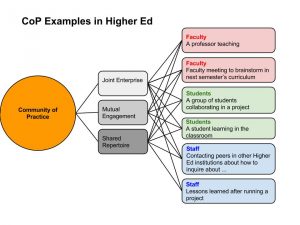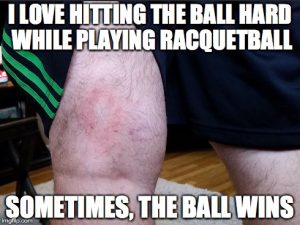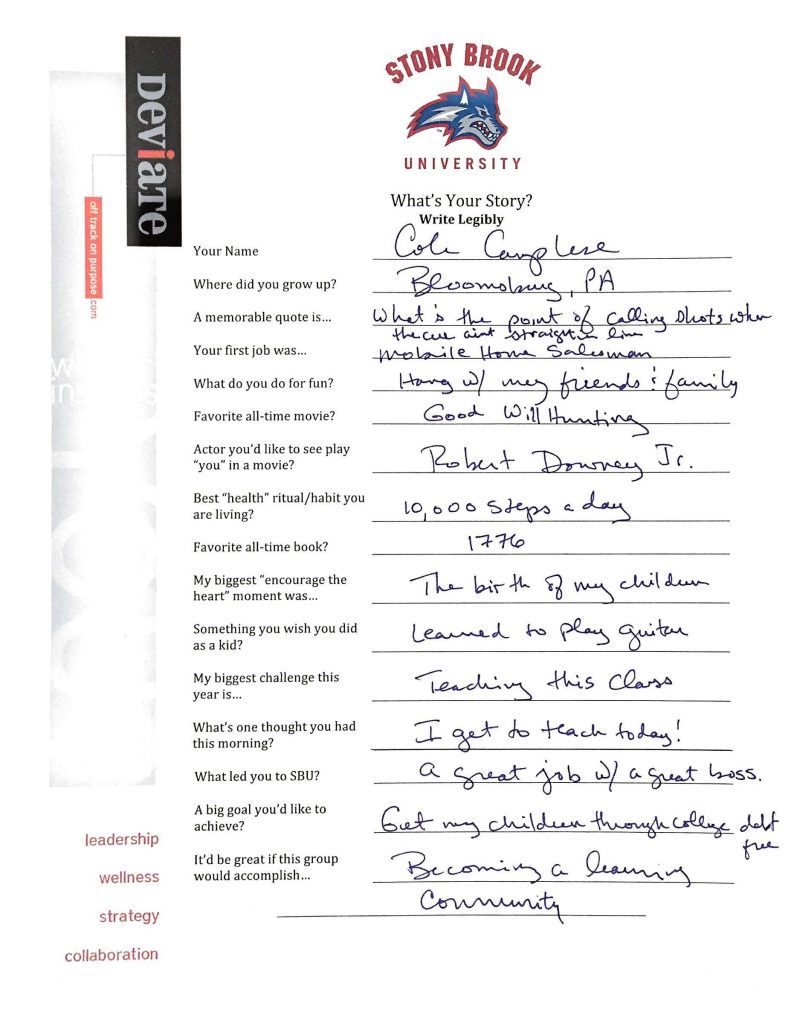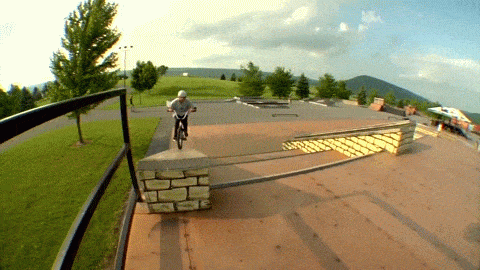Category Archives: Identity
Reflections on Wenger's Community of Practice
Chapter 2 of Wenger’s book discusses “Community of Practice”. As definition, a Community of Practice (CoP) is a learning partnership where people engage in such partnership and start creating a learning environment by sharing common interests and needs with a set of tools. This correlates directly to one of the classes themes, Community, and certainly indirectly to the other two themes, Identity and Design. Wenger, a Social Learning Theorist, discusses the different dimensions of practice that embody community of practice; mutual engagement (identity), a joint enterprise (identity, design), and a shared repertoire (design).
The author goes in detail about how a CoP gets created, what are the necessary components, ground rules, its resources, governance, etc. Conditions, resources, and demands shape the practice.
A CoP does not necessarily need to be “healthy”, meaning, there will be fighting, disconnects, arguments, but at the end, it will still be a community of different and diverse personalities, learning and sharing valuable content.
I found this not to be an easy read. I complemented the reading with other articles from the web, as well as a few videos in YouTube. Time permitting, I will read chapter 1, as there were a few references in chapter 2 to this chapter.
Here are a few examples of a CoP in the Higher Ed space:
The questions I’d like to pose;
Weekly Create – Week 1 – Shady
Personal Introduction – Shady
Hello, my name is Shady, pronounced shad-dee. I was born and raised in Spain, came to the States at age 20 to get a college degree. Who would’ve thought I would never leave. I am currently the Senior Director of University Information Systems at Stony Brook University. In this role, I supervise the creation of most software systems for the Stony Brook University. Many of these systems are front facing, i.e. SOLAR and Campus Residences software, as well as software development for administrative systems, campus residences, research systems, and several others. In addition, my group also provides project management support to some of the largest software deployments on campus in support of faculty, staff, and students.
I’m very interested in this course because it will give me insight in two different ways; one, I will be able to learn more about disruptive technologies, a field that directly impacts my line of work. Secondly, it will give me a true experience of the troubles and tribulations that our students must go through in order to enroll, create and view their class schedule, pay their bills, and ultimately, see their grades, which all ride on software supported by my group.
In my spare time, I love tinkering with cars, specially Volkswagen’s. I’ve loved VW’s ever since I was a little kid, and I’ve pretty much have had all models (Scirocco, GTI (1.8T and VR6), Golf, Jetta (2.0 and GLI), Corrado VR6, Passat VR6 . I can mechanically work on them. Do not care for air cooled ones however.
I also enjoy keeping up with technology and innovation. I would like to say that I consider myself to be above average when it comes to technical knowledge and exposure. However, as professor Camplese said on the first day of class, his daughter makes fun of him for some apps that he uses which are already “obsolete” as per her. Our youngsters are driving technology, specially Web 2.0, as read in Disrupting the Classroom. I’m amazed at how quickly my kids have learned to use technology, and keep up to date with it.
I can barely keep up with the never ending array of social media platforms. I am however active in Linkedin, Yammer, Google+, Twitter, YouTube, WordPress, and Instagram. I also rely heavily on WhatsApp to communicate with my folks overseas. When I first came to the States, I would try to send a hand written letter to my parents once a month, and every other month to the friends I left behind. Phone calls overseas were extremely expensive. Now, with apps such as Skype and WhatsApp, keeping close to loved ones is not only much easier and frequent, but FREE, talking about disruption!
I also spend a considerable amount of time playing racquetball every week. I usually play four to five times a week for a total of about ~10 hours. It is at this time that I can finally disconnect from the “internets” and go back to rudimentary tools. A string racquet and a bouncy ball, those are not part of the internet of things 🙂
The first week assignment was to read and comment on the article Disrupting the Classroom
I enjoyed reading the article, and in some instances, it was an eye opener. The Higher Ed landscape has certainly changed from the last time I took a college class, back in 2005. Going back to school for the first time in 2015, I see students heavily relying on their smartphones. Lids are certainly up everywhere, and collaboration is a breeze. Computers are in the classroom, wireless everywhere, collaborative spaces, all very different, in really, not that much time.
“Schools and universities have the potential to become communities of learning, but educators and administrators must rethink teaching and learning in the context of new social trends and the technologies that support them.”
Our faculty must certainly adapt to how students are now absorbing data. The content might not need to change, but the delivery must. Students are already coming with web2.0 embedded in their DNA. They have grown up with, and not trained on.
Towards the end of the first identified trend, the authors discuss the need to train our students to be safe in the internet, just like we teach our children not to get in a car with a stranger. But, how can we do this? My 6 year old, already using a tablet more fluently than I do, loves to take pictures of his siblings while on the toilet. He finds it extremely amusing and loves to show them to every one in the house. His tablet is connected, and at his age, he already has a Gmail account, and knows how to send instant messages. In one occasion I managed to stop him from sending one of these pictures to the neighbor’s kid.
We are not saying we want teachers to embrace ubiquitous social networks simply because students are present in them. We are suggesting that the affordances of these environments and devices should be used to support the underlying principles in our own classroom practice.”
The lectures no longer need to happen in the class, say Tuesdays and Thursdays from 2:20pm to 3:40pm, they can happen via blogs, tweets, contributions in Google docs, YouTube, etc.
Why are students, or youngsters in general, more used to sharing their thoughts in a public forum than older people … and by that, I include myself at 41. Is it because they have grown up in Web2.0 era, as said earlier, it’s already embedded in their DNA? My son started playing with an iPad at age 2. I never tough him how to use it.
The question is how to develop new ways of thinking about assessment that encourage students to use the content they produce to create projects of a manageable size that can be assessed”
A second reading was YouTube’s ‘Charlie bit my finger’ tells us about Web 2.0
This was another interesting read. Perhaps a question from a psychological perspective; why do we want to be heard? Before the web, social networking, an other media where we could express our thoughts, people still wanted to be heard, we posted flags of our favorite soccer team on our windows, we had “outspoken” bumper stickers, etc. With the revolution of the web2.0, expressing yourself has become easier. This certainly touches on the three themes of the class; Identity, Community, and Design
When we post anything to the Web, we are begging for a conversation. We want to be ridiculed, called out, accepted, talked about, linked to, and, most important, not ignored.”
And again, we can identify a theme: Youngsters are, unknowingly to them, a driving force to this revolution. We saw it with the death of Myspace in favor of Facebook.
And who is driving this revolution? Teens. For them, this isn’t “technology,” it’s just the way things are.”
During class we also listened to a podcast about how YikYak, an app that allows you to post anonymous comments based on geo location, had unveiled racism at Colgate University. The author, Alex Blumberg, discusses a series of racist comments targeted to specific people within the University. An issue for which administrators were either not aware or had chosen to look the other way.
The podcast addresses two issues, racism in America, and the dangers of posting anonymously.
In my opinion, YikYak raised an issue, that, without anonymity, would’ve never surfaced and made known to senior administrators. We monitor YikYak on campus to see what students have to say about SOLAR, about the wireless network, Blackboard.
A few months back, I had the privilege of attending TEDxSBU. One of the speakers, Charlie Robbins, also a senior administrator at Stony Brook University, spoke about social justice. I vividly recall his comments about racial injustice, how, after a series of national racial controversies, we, the american people, were supposed to start the “debate”, yet, has it happened? has it been addressed?
Social media allows us to uncover this type of issues, and should help those responsible in addressing them. It does not create these issue.
Cole's Interview
Here are my answers to the group interview questions. Leave comments.
What is a Weekly Create?
Anything. I want you to make stuff … take a picture, make a gif, make a meme, record sound, shoot some, video, or write something. My goal is to get you to stretch your creativity and make digital things. They need to be posted to the course blog and you need to write something about what you made. Here are some questions to consider … How did you make it? What was the motivation for making it? What did you use to make it? Did you enjoy making it? Was it difficult? What does what you make say about you? Does it shape your identity? Are you happy with it?
At the end of the day, I just want you to spend some time thinking about creating digital artifacts. You will do one each week and we will build the rubric together, but for the most part anything goes!




